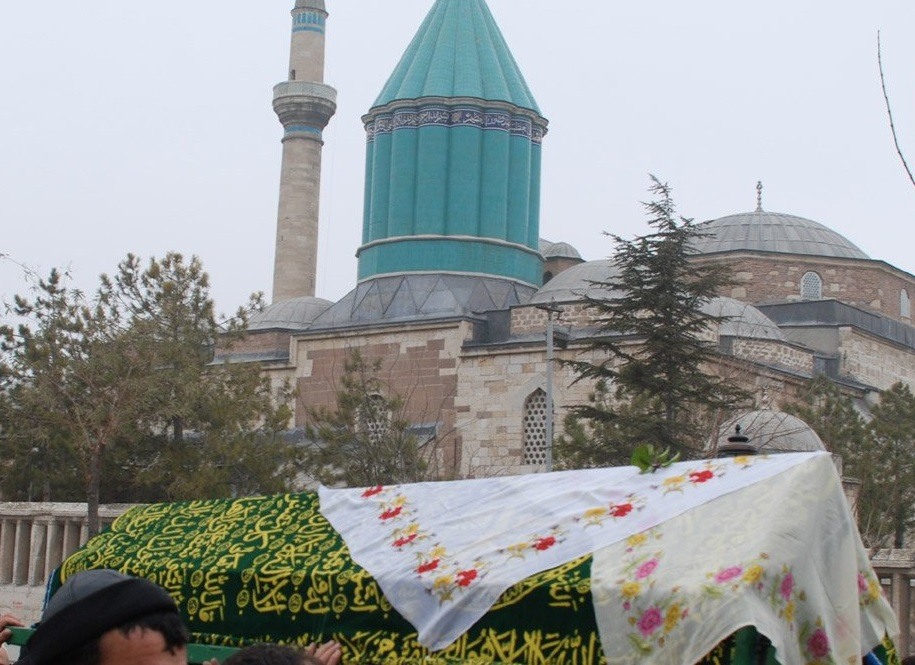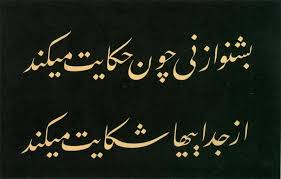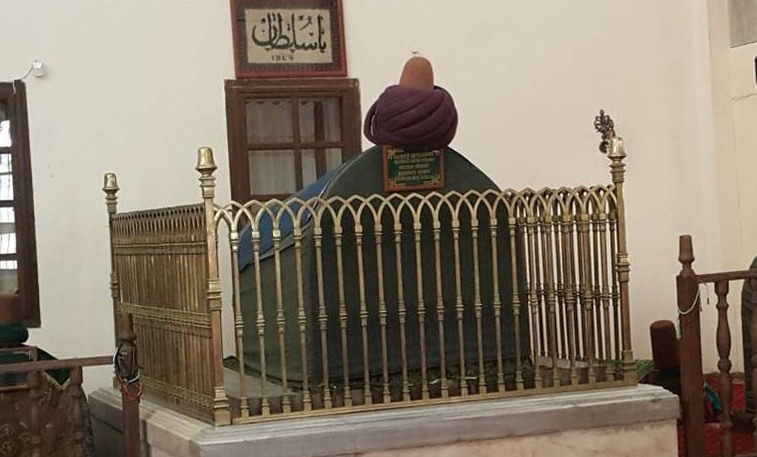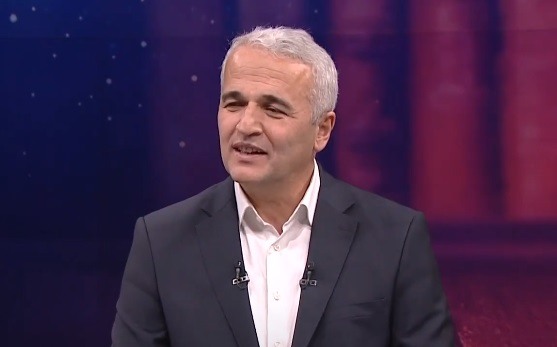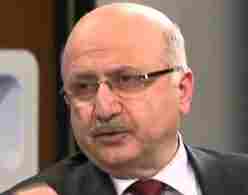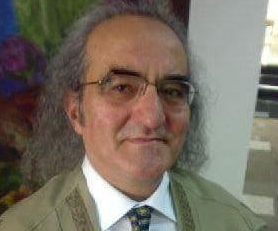İHSAN OKTAY ANAR’IN SUSKUNLAR’INDA TASAVVUFİ-MEVLEVİ BÜYÜLÜ DÜNYA MİTOSU VE POSTMODERN DEKONSTRÜKSİYON
İHSAN OKTAY ANAR’IN SUSKUNLAR‘INDA TASAVVUFİ-MEVLEVİ BÜYÜLÜ DÜNYA MİTOSU VE POSTMODERN DEKONSTRÜKSİYON
THE MYTH OF THE SUFI-MAWLAWI MAGICAL WORLD AND POSTMODERN DECONSTRUCTION IN İHSAN OKTAY ANAR’S SUSKUNLAR
Muhammet SALMAN1, Resul KIRMIZIDEMİR2
ÖZ
İhsan Oktay Anar’ın Suskunlar’ı, postmodern tavrın tekniklerini ihtiva eden dekonstrüsiyon ve tasavvufi- Mevlevi büyülü dünya mitosuyla şekillenmiştir. Postmodern tavır, hakiki olma iddiasında olan her türlü şeyin altını oymakta ve metafizik bağlamı zedelemektedir. Hakikat ise ebedi olduğundan, insan kendini ebedi olanda haklı ve mutlak bulmakta, ebedi olanı kaybettiği sürece sonlu olmanın dayanılmaz eksikliğini hissetmektedir. Bu da kaçınılmaz olarak nihilizmi ve pesimizmi koşullar. Postmodern tavrın bu özelliği (radikal nihilizm ve dekonstrüksiyon), incelediğimiz anlatıda tasavvufi-Mevlevi büyülü dünya mitosu ile karşı karşıya getirilmiştir. Anlatıda tasavvufi-Mevlevi bir zemin seçilmesi, bu zeminin son derece kültürel ve toplumsal olduğunu, dolayısıyla belli bir kimliğe ve bakış açısına sahip olduğunu göstermektedir. Öyle ki bu bakış açısı kendi kimliğinden bir ebediyet mitosu üretebilmiştir. Bu mitosta hakikat, musiki aracılığıyla terennüm edilmektedir ve anlatıda olaylar zinciri ahengi bozuk hakikat ve esas hakikatin arayışı çerçevesinde tasvir edilmektedir. Tasavvufi-Mevlevi büyülü dünyayı temsil eden musikişinas karakterler, kendilerine düşman olan postmodern tavrın metafizik bağlamından kopmuş insanını temsil eden karakterlerle mücadele içindedir. Bu mücadelenin merkezî konumunda yer alan Eflâtun, esrarengiz bir ses duyar ve anlatının tasavvufi-Mevlevi zeminini temsil eden bir karakter olarak seyr ü sülûk eder, ancak postmodern tavrın dekonstrüksiyonuna uğrar. Yine de bu dekonstrüksiyon esasında nihilizme değil de hakikate ulaşmaya yardımcı olacağından, Suskunlar, postmodern tavrın kendi içine dönük eleştirisini olanaklı kılan yeni bir gerçeklik zemini olarak tasavvufi-Mevlevi büyülü dünyayı, insanoğlunun ebediyet ihtiyacını karşılayan bir mitos olarak okura sunmaktadır.
Anahtar Kelimeler: Mevlevilik, Hakikat, Musiki, Postmodern dekonstrüksiyon, İhsan Oktay Anar
ABSTRACT
Ihsan Oktay Anar’s Suskunlar is shaped by the myth of the sufi-Mawlawi magical world and deconstruction which includes the techniques of postmodern attitude. The postmodern attitude undermines all kinds of things that claim to be genuine and undermines the metaphysical context. This inevitably conditions nihilism and pessimism. This feature of postmodern attitude (radical nihilism and deconstruction) is confronted with the myth of the sufi-Mawlawi magical world in the narrative we examined. The selection of a sufi-Mawlawi basis in the narrative shows that this ground is extremely cultural and social, and therefore has a certain identity and perspective. So much so that this perspective was able to produce a myth of eternity from its own identity. In this myth, the truth is chanted through music, and in the narrative, the chain of events is depicted within the framework of the search for the disharmonious truth and the essential truth. The characters representing the sufi-Mawlawi magical world are struggling with characters that represent the person who is disconnected from the metaphysical context of the postmodern attitude that is hostile to them. Eflatun, who is at the center of this struggle, hears an enigmatic voice and acts as a character representing the sufi-Mawlawi basis of the narrative, but undergoes the deconstruction of the postmodern attitude. Nevertheless, since this deconstruction will essentially help to reach the truth and not nihilism, Suskunlar presents the sufi-Mawlawi magical world as a mythos that meets the eternity need of mankind as a basis for reality that enables self-criticism of the postmodern condition.
Keywords: Mawlawiyah, Truth, Music, Postmodern deconstruction, Ihsan Oktay Anar
Extended Abstract
Ihsan Oktay Anar’s Suskunlar have two floors that are confronted. One is deconstruction, which is the most important tool of postmodern attitude, while another is the myth of the magical world of sufi-Mawlawi. At first glance, we seem to be facing a postmodern narrative, especially with the use of irony and parody techniques. However, when we look carefully, we realize that there is an attitude beyond the usual nihilism of the postmodern attitude. This attitude is the introvert deconstruction of postmodern deconstruction, that is, in a way, its criticism. The most basic feature of postmodern deconstruction is the undermining of the ‘everything’ that claims to be true. But it doesn’t really undermine ‘everything’ because it doesn’t involve itself in everything. If he had included itself, he would have discovered that all it did was radical nihilism and meaninglessness. Suskunlar, on the other hand, complete the ‘everything’ that postmodern deconstruction deals with at this point. Now postmodern deconstruction is also included in this ‘everything’. However, in order to do this, it creates a myth of truth that can be deconstructed in front of the deconstruction. This mythos is the myth of the magical world of sufi-Mawlawi. Sufism says that in order to reach the truth, it is necessary to sayr u suluk. Mawlawiyah uses music as an important tool in this way. In Suskunlar, we can say that there is a sufi-Mawlawi attitude, since the characters who desire to reach the truth show both mystical and Mawlawi characteristics in this context. Thus, the myth of truth that is brought before postmodern deconstruction becomes the myth of the magical world of Sufi-Mawlawi. Human beings always need narratives of truth and mythos that characterize eternity. This situation has become impossible as postmodern deconstruction has always undermined it. Thus, instead of myths that inevitably characterize eternity and will prevail for many years, myths are always destined to be undermined. This made it inevitable to talk about the truth nonstop and involuntarily eliminate the quality of eternity. Thus, postmodern deconstruction damaged the metaphysical context of man. Eflatun, a character who represents the sufi-Mawlawi ground in Suskunlar, the sayr u suluk does so because he wants to find the truth. However, it is subjected to postmodern deconstruction. It is constantly ridiculed and presented to the reader in an ironic and parodying way. However, thanks to this irony and parody (i.e. deconstruction), he arrives at a place called Galata Mevlevihanesi. Here, he discovers that music is a very important tool for the interpretation of truth and plays the ney, an influential instrument in the Mawlawi. After this performance, he will no longer speak and he will turn to the path of the truth. In addition, the narrative contains the myths of the truth of mankind, and all of these mythos preach silence in order to generate the truth. For example, a character named Zahir Efendi, son of Neyzen Batın Hazretleri in Suskunlar, essentially represents Jesus, son of God because he, like Jesus, is crucified for the sake of truth. Unlike the biblical advice of Jesus, he says that truth can be reinvigorated through music, and that ultimately even silence is a note, so it is necessary to shut up about the truth. In this context, Suskunlar state that it is futile to constantly chatter about truth in the world of phenomena. Therefore, the main structure of the Suskunlar’s was shaped by both Platonian and sufi-Mawlawi universe vision. It’s a vision of the immanent and transcendent. Just as Platon philosophy is divided into a realm of phenomena and ideas, the universe is reflected in Suskunlar through Neyzen Batın’s holiness and his son Zahir Efendi. The name Eflatun also emphasizes the philosopher Plato. Not only does it emphasize, it has a character parallel to Plato’s distinction between the realm of phenomena and the realm of ideas because while trying to search for the truth in the realm of phenomena, he cannot find it in this world and sees that the truth is transcendent and even when he finds it, there is no need to speak and ask questions as he did while searching for it. As Socrates, who was involved in Plato’s dialogues, said while refuting all kinds of phenomenal claims and truths and emphasizing the realm of ideas, ultimately all Eflatun knows is that he knows nothing. Indeed, the truth is not knowledge. However, postmodern deconstruction subjects the truth to a destructive criticism as if it were information. In Suskunlar, it is shown that there is no knowledge of truth using both Platonian, Christianism and sufi-Mawlawi universe visions, it has been shown that truth is possible only through music and is performed with the note of silence. For example, the character named Seer of Yedikule [Yedikule Kahini], who sees science and knowledge as a worldly need, receives the news that there are signs in the sky heralding the truth. If he looks at these signs with the naked eye, he knows he’s going to go blind, so he closes one eye and looks at it with the other. At this point, the postmodern attitude ironically deconstructs the idea that we cannot comprehend the truth. However, this Seer of Yedikule, who we think is the writer, then looks at the truth with the naked eye with one intact eye and conveys the latest events to the reader. And since he can’t see anything after that, the seer shuts up and the Suskunlar ends because once the truth is found, all that remains is silence. Thus, Suskunlar uses the sufi-Mawlawi magical world floor to subject the concept of truth to postmodern deconstruction. However, this deconstruction actually carved itself by enabling the floor to be made possible instead of undermining this floor, thus the deconstruction of postmodern deconstruction became possible.
Giriş
Suskunlar’da, postmodern tavrı haiz bir zemin olduğu gibi tasavvufi-Mevlevi büyülü dünya zemini de bulunmaktadır. Bu iki zemin, temelde ruh-beden ikiliğine dayanmaktadır. Hem Doğu düşüncesinde Mevlana üzerinden hem de Batı düşüncesinde Platoncu gelenek üzerinden bu ikilik sembolize edilip yansıtılmaktadır. Elbette bu ikiliğe sebep olan şey ise insanoğlunun hakikat karşısındaki konumudur. Çağlar boyunca hakikati farklı şekillerde algılayan ve açımlayan insanlık, günümüzde bunun altını oymakta ve bu kavramın mahiyetini bir nevi alaya almaktadır. Bu bağlamda postmodern tavrın hakikat kavramına şüpheyle yaklaşmakta olduğunu söyleyebiliriz. Bununla birlikte hakikati ironik ve parodik sunmak amacıyla geçmiş külliyatı talan etmekte ve bu birikimin altını oymaktadır. Bu noktada postmodern dekonstrüksiyonu salt bir yapıbozum girişimi olarak değil aynı zamanda sonu daima nihilizme varacak denli hakikatin altını oyma tavrı olarak görmekteyiz. Bu da bize bu tavrın en önemli ve belirgin silahı olan dekonstrüksiyonun daima itiraz eden ve hakikatin altını oyan bir yapıyı haiz olduğunu göstermektedir. Çünkü bu durum bilhassa ebedilikten yoksun gerçeklikler üretmeye itmekte ve insanoğlu hakikate ihtiyaç duyduğundan dolayı da insanın hakikat hakkında sürekli gevezelik etmesine kaçınılmaz olarak sebebiyet vermektedir. Oysa Suskunlar’da oluşturulan yeni gerçeklik zemininde, hakikat gevezeliğine adeta “sus” denmekte ve tasavvufi-Mevlevi büyülü dünya mitosu, bir cevap olarak karşımıza çıkmaktadır. Tasavvuf, hakikate ulaşma yolunda seyr ü sülûk etmek gerektiğini söylerken Mevlevilik ise musıkiyi bu yolda oldukça önemli bir araç olarak kullanmaktadır. Anlatıda da bu iki durum yan yana işlendiğinden, tasavvufi-Mevlevi tabirini kullanmayı uygun bulduk. Ayrıca tasavvufi-Mevlevi büyülü dünya zeminini insanoğlunun çağlar boyunca hakikat karşısında üretmiş olduğu büyülü (veya fantastik) anlatımlardan olan “mitos” kavramı ile nitelendireceğiz. Çünkü mitos hem bir toplumun kültürel yapısını hem de bu kültürle oluşan kimliğini vurgulamaktadır. Dolayısıyla bir toplumun hakikat karşısında üretmiş olduğu mitosu onun hayata bakış açısını da yansıtmaktadır. Bu noktada Suskunlar’da yer alan tasavvufi-Mevlevi büyülü dünya zemini de esasında içinde bulunduğumuz toplum dairesinin hakikat karşısında üretmiş olduğu spesifik bir bakış açısı olduğundan, mitos demek durumu daha açıklayıcı kılacaktır. Dolayısıyla Suskunlar’ı bahsini ettiğimiz bu iki zemine paralel olarak ele almadan önce postmodern tabirine odaklanmak ve tasavvufi-Mevlevi dünya görüşünü açımlamak yerinde olacaktır.
Devamı:…
Ihsan Oktay Anarin Suskunlarinda Tasavvufi Mevlevi Buyulu Dunya Mitosu Ve Postmodern Dekonstruksiyon
1 Yüksek Lisans Öğrencisi, İstanbul Üniversitesi Sosyal Bilimler Enstitüsü Türk Dili ve Edebiyatı Anabilim Dalı, İstanbul, Türkiye. E-mail: muhammetsalman_34@hotmail.com
2 Yüksek Lisans Öğrencisi, İstanbul Üniversitesi Sosyal Bilimler Enstitüsü Türk Dili ve Edebiyatı Anabilim Dalı, İstanbul, Türkiye. E-mail: resulkirmizidemir@gmail.com


